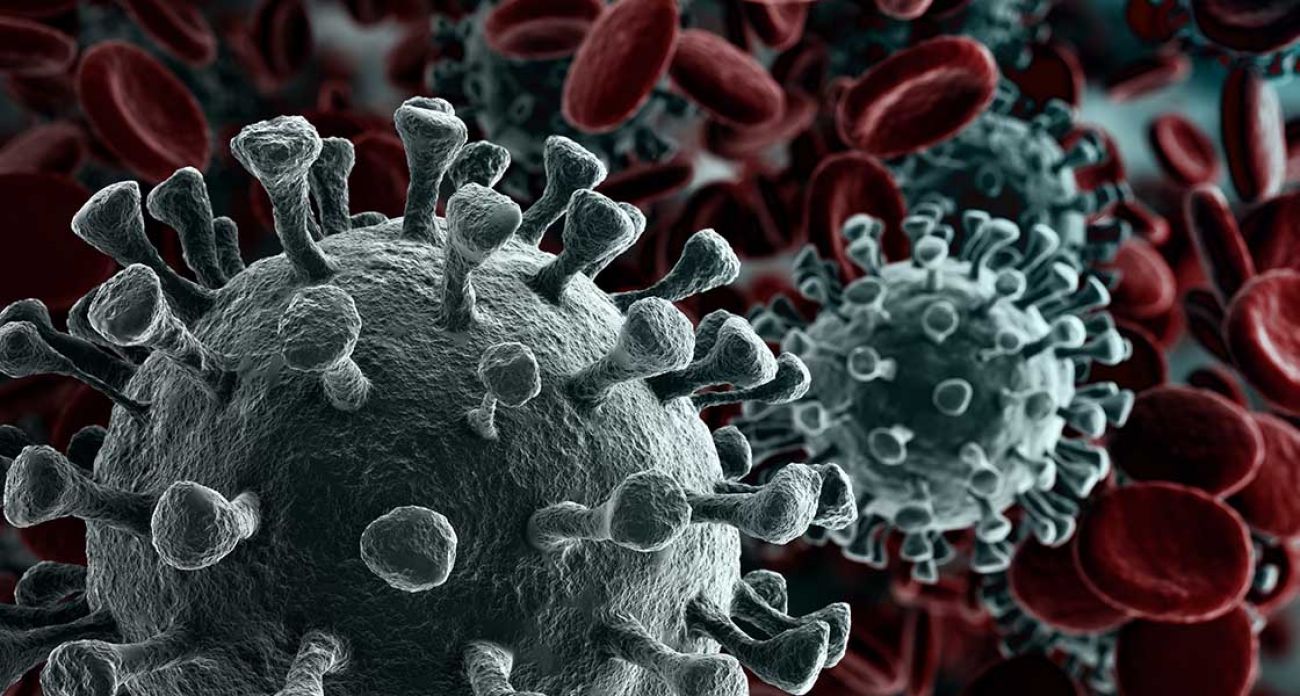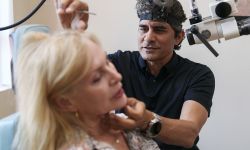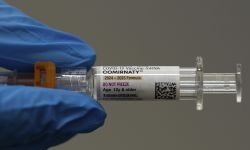Why a coronavirus vaccine takes so long, and some possible shortcuts

Since the first days of the novel coronavirus outbreak, public health officials, infectious disease specialists and politicians have acknowledged that the world’s best hope for beating the virus is a safe and effective vaccine.
But, they cautioned, it would take a year to 18 months, at least, to make sure it was safe and effective.
Dr. Anthony Fauci, the nation’s top infectious disease expert, last week told NBC’s Today Show that a vaccine by January — about a year since the outbreak began — was “doable.”
"We want to go quickly, but we want to make sure it's safe and it's effective," said Fauci, who heads the National Institute of Allergy and Infectious Diseases. "I think that is doable if things fall in the right place.”
- Michigan Gov. Whitmer extends coronavirus stay-at-home order to May 28
- Whitmer reopens Michigan from coronavirus in phases: What that means to you
- The latest: Michigan coronavirus map, curve, chart, updated COVID-19 news
But as the number of confirmed cases in the United States passes 1 million and the death toll exceeds 70,000, including more than 4,000 in Michigan, that schedule can seem unacceptably slow.
In fact, it’s astonishingly fast and may well be optimistic, infectious disease and vaccine experts told Bridge Magazine.
The vocabulary of clinical testing
Clinical trials of vaccines are a complicated business, full of unfamiliar, and sometimes confusing terminology. To help keep things straight, here’s a glossary of clinical trial terms:
FDA: The U.S. Food and Drug Administration, responsible for overseeing clinical trials, licensing vaccines, and approving all the steps necessary to test them.
Pre-clinical trial: Usually this involves testing a vaccine on animals, and is done before the vaccine is tested in people. Also known as a “proof of concept” trial, because it establishes that, at least in theory, the vaccine does what it’s supposed to. Takes weeks to months.
Challenge trials: Typically performed only on animals because doing them on humans is considered unethical. An animal is inoculated with a potential vaccine and then intentionally exposed to the virus to see if the vaccine is protective. There is some talk of the possibility of human challenge trials for the new coronavirus vaccine, but so far these have not happened.
Clinical trials: Tests of the vaccine in people, which usually happen in three phases.
Phase 1 trial: The vaccine is tested in a small group of healthy people — usually 20 to 80, to see if it works in humans, what dose is needed, and that it’s safe. Takes months, usually.
Phase 2 trial: The vaccine is tested in a larger group of people, including those who are at high risk of contracting the virus and would again check for safety issues, and vaccine-related side effects. For coronavirus, this could include older adults and people with pre-existing health conditions. Takes a year, or more.
Phase 3 trial: These trials, which involve thousands of people, are the “proof in the pudding” step that confirms the effectiveness of the vaccine compared to a placebo. This is what the FDA uses to establish that the benefits of the vaccine outweigh any risks.
Antigen: An antigen is any substance that provokes the body’s immune system to create antibodies that fight the virus. In the case of the coronavirus vaccine, this is likely to be a protein on the outside of the virus that allows it to enter human cells and replicate.
Antibody: The body’s innate defense mechanism against viruses, bacteria, and other foreign substances. These Y-shaped proteins (there are many different kinds) target the invader and bind to it to neutralize the threat.
Spike protein: The tiny spikes on the outside of the coronavirus, which the virus uses to latch onto receptor cells in the human throat and lung. This is the antigen target of many of the vaccines in development.
Neutralizing antibodies: The holy grail of the immune response is an antibody that, when produced in people, prevents a virus from infecting the cells, thereby neutralizing it. This is the goal for a coronavirus vaccine that would keep people from getting sick at all.
Immunity: A person has immunity to a virus if, when infected, they don’t get sick. Immunity can be derived naturally from being exposed to a virus and recovering, or from vaccines. The length of time that a person remains protected varies, and for coronavirus is unknown.
Herd immunity: This happens when there are so many people in a community who are immune to a viral infection that it can no longer easily spread. For many vaccines, herd immunity is reached when 80 percent or more of the population is vaccinated. — Brie Zeltner
The fastest a new vaccine has ever made it to market before in the United States: the mumps vaccine, which took four years and was approved in 1967. The time it usually takes to get a vaccine to market: 10 years, or more.
“The breathtaking speed with which all of this is happening is really unprecedented,” Dr. Robert Salata, an HIV specialist at Case Western Reserve University and chief of medicine at University Hospitals Cleveland Medical Center, told Bridge.
There are more than 70 companies working on almost 100 candidate vaccines, and billions of dollars in federal and philanthropic funding, removing the inherent financial restrictions in creating a vaccine.
“Vaccines are never made this way,” said Dr. Paul Offit, chief of the infectious diseases division at Children's Hospital of Philadelphia and the co-inventor of the rotavirus vaccine, which took about 26 years to get to market. “It’s not like when we went to make a rotavirus vaccine there were 70 companies working on it. There were two.”
But even with the breakneck pace, massive investment and dozens of possible vaccines already in development, it’ll still take a lot of luck to get one out in a year.
Here’s why vaccine development takes so long, what’s being done to speed things up, and what the implications of the fast pace could be.
The typical pace of vaccine development
Generally, the process for creating an entirely new vaccine for a virus — which involves proving its safety, manufacturing it in large quantities and distributing it — can take years, even decades, to complete. The chickenpox and rotavirus vaccines took more than 20 years to go through this process, Offit told Bridge.
Here’s how all that time breaks down:
This can take years and is often the longest part of a vaccine’s development, particularly if little is known about the virus or if it is complex.
Proof of concept: Next, the candidate vaccine is administered to animals, often mice or monkeys, in pre-clinical or “proof of concept” testing. This establishes that at least in theory, the vaccine safely produces the desired response (production of antibodies) and is effective at preventing infection (called a challenge test).
This process takes from weeks to months, but can be finished quickly, particularly if researchers have already done the work with similar viruses, said Dr. Adam Lauring, an infectious disease specialist at University of Michigan Medical School.
Clinical trials: If this goes well, the vaccine can then move from this pre-clinical phase to the clinical one, which involves testing on people.
Phase 1 trials: In this phase, a small group of people, usually about 20 to 80, are given the vaccine to see if it works the same way in healthy humans. This phase, which typically lasts at least four to six months (and sometimes longer), assesses how safe the vaccine is in people and determines a safe dose range that results in the best immune response. While unlimited money and volunteers help in this phase, the only way to assess safety is by following participants over time and monitoring them for vaccine-related side effects.
Phase 2 trials: If all goes well, the vaccine can then move on to Phase 2 trials. In these studies, more people (tens to hundreds) receive the vaccine, including those who are in potentially vulnerable groups, such as the elderly and those with other health conditions. This step alone can typically take a year or more.
Phase 3 trials: In this final, large-scale phase of testing, the vaccine is typically given to some people and not others, and both groups are followed to see if there’s a significant difference in how many people are infected between them. For these trials, there “needs to be enough people who are exposed to the virus over time to see if it works or not,” Lauring said.
These trials, which often take place in multiple locations and involve thousands of people, can take years to complete.
FDA review: When the trials are done, and everything is documented, results can finally be sent to the U.S. Food and Drug Administration for review, which usually takes about 10 months.
If all goes well, the vaccine can then be manufactured. This step, one of the last before a vaccine makes it to market, can be one of the longest, depending on the type of vaccine.
“There’s lots of different types of vaccines, and some are easier to produce than others,” Lauring said.
Some, which use DNA or RNA from the virus to provoke the desired immune response (there are many in development but none yet approved), are faster to scale up for production than those that use a weakened or killed version of the whole virus (as in the flu, polio and chickenpox vaccines).
How to speed things along
So if the average vaccine takes a decade or more to get to market, how can the coronavirus vaccine be done in 12 to 18 months?
Here’s what’s being done to shorten the typical timeline:
Get tons of researchers, not just one or two labs, to make it
There are more than 70 companies and laboratories worldwide working on almost 100 possible coronavirus vaccine candidates, making it a lot more likely that researchers will find at least one that works. They could find more than one.
Throw gobs of money at research to reduce the risk
Drug and vaccine development are hugely expensive. To get a single vaccine from research and discovery to product registration with the FDA costs between $200 million to $500 million.
That’s a big risk, given that the market for a given vaccine may be gone by the time it’s complete.
During the 2002-2003 outbreak of SARS (severe acute respiratory syndrome), which was caused by another coronavirus, it took about 20 months to ready a vaccine for testing on people. The vaccine never made it further, though. By that time the outbreak was contained, there was no incentive for government or private pharmaceutical companies to fund a vaccine.
To alleviate that risk and encourage as many players to jump into the game as possible, governments, philanthropic groups and celebrities across the globe are pledging billions to get a vaccine produced.
That includes $250 million from the Bill & Melinda Gates Foundation, and about half a billion dollars each from the Trump administration to the U.S.-based companies Johnson & Johnson and Moderna, which have pledged to produce millions of doses of a vaccine.
Rely on past coronavirus research to skip early steps
The SARS and MERS (Middle East respiratory syndrome) epidemics gave researchers now looking for a vaccine a head start on some of the early, time-consuming research it takes to establish how a virus works. SARS, which affected 26 countries in 2003, caused about 8,000 infections, according to the World Health Organization, with a mortality rate of roughly 10 percent.
“We’re lucky in that we already know a lot about SARS and MERS,” said Case Western Reserve University’s Salata. “We’re not starting from scratch.”
SARS and SARS-CoV-2, the virus that causes COVID-19, share roughly 80 percent of their genetic sequence, and both get into human cells the same way — by latching on to a receptor using the “spike proteins” that stud the surface of the virus.
Spike proteins are one of the main targets for vaccines in development. If the body can recognize them and produce antibodies that destroy them, the virus will be neutralized.
“That’s a pretty good, educated guess,” Lauring said, as to what to target.
“In flu virus there’s a protein that does that, in Ebola virus there’s a protein that does that.”
Don’t wait for the finished product to jump-start manufacturing:
Usually (and logically), vaccines are only manufactured after all clinical testing is complete and the product is licensed for use. The catastrophic human and economic costs of the pandemic have thrown that logic out the window.
As Fauci put it in an interview with NBC: “You don’t wait until you get an answer before you start manufacturing.”
If more than one vaccine proves to be safe and effective, each will need its own specialized production facility. They can be built from the ground up, or created from an existing facility, a process that costs millions and takes months to complete.
Don’t wait for all trials to finish
There are ways to shave time from the lengthy clinical trial phases, including running different pieces of the research on parallel tracks instead of sequentially, bypassing some steps altogether, or skipping some of the cumbersome FDA regulatory requirements, doctors told Bridge.
Given what’s already known about other coronaviruses, some research groups have skipped pre-clinical work in animals and gone straight to testing in people, for example.
Others will likely test different doses of the vaccine simultaneously, rather than one at a time.
Regulators are also relaxing many of the stringent requirements that delay the development process, said Offit, who sits on the FDA’s vaccine advisory committee, which usually reviews all vaccine trials.
“I can promise you this is not going through our committee,” he said. “It’s a lighter touch by the FDA.”
All of this could allow for the first Phase 3 trial of a vaccine as early as July, Offit said. In the U.S., this could involve 10,000 to 20,000 people, and several vaccines being tested at once and compared to a single control group that receives a placebo.
A vaccine that’s proven successful in early trials could also be given to those at high risk of infection even before the definitive trials are complete under the FDA’s emergency use authorization.
Conclusion: Fauci’s timeline is possible, optimistic
Given all of the effort and shortcuts being used to speed things up, is the goal of 12 to 18 months for the coronavirus vaccine even possible?
“It’s possible,” Offit said. “But everything has to go right.”
All the experts Bridge interviewed agreed, expressing cautious optimism.
“It’s really optimistic,” said Dr. Abhay Satoskar, vice chair for research in the departments of pathology and microbiology at Ohio State University’s Wexner Medical Center. “There can’t be any glitches.”
“There is always the potential for surprises and things that you don’t expect,” said Lauring of U-M. “We didn’t know anything about the virus five months ago.”
Still, the doctors agreed that in 12 to 18 months there will likely be a vaccine — and even several — ready to be tested in a large-scale trial, or already in this process.
“I’m confident that we will have a vaccine,” Satoskar said. “The question is how good it is, how long it will protect you, whether you need more than one dose, or if we have to take it every year.”
Offit, of Children’s Hospital of Philadelphia, worries that because we’re so scared of COVID-19, we might be willing to accept a level of risk we wouldn’t otherwise, though he believes that everyone working on the vaccine “cares and wants to get this right.”
Still, speed is often the enemy of accuracy.
“There’s such pressure to get this done quickly,” Offit said. “When things are done hurriedly, mistakes are often made. That’s just life.”
Any mistakes when it comes to a vaccine that will be distributed to hundreds of millions of healthy people can be deadly. A manufacturing error by a company producing the polio vaccine led to 40,000 cases of the disease and 10 deaths in the mid-1950’s. In 1976, a rushed effort at mass vaccination against swine flu resulted in 450 cases of Guillain-Barre syndrome, a rare immune system disorder that can lead to paralysis, and was widely considered a debacle.
In the end, everything hinges on testing the vaccine in lots of people and comparing it to a placebo. To know if it really works, you have to have enough people in both groups exposed to the virus naturally and either get sick, or not.
And that takes time.
RESOURCES:
- Michigan coronavirus dashboard: cases, deaths and maps
- Michigan coronavirus Q&A: Reader questions answered
- Michigan families can get food, cash, internet during coronavirus crisis
- Hey, Michigan, here’s how to make a face mask to fight coronavirus
- How to apply for Michigan unemployment benefits amid coronavirus crisis
See what new members are saying about why they donated to Bridge Michigan:
- “In order for this information to be accurate and unbiased it must be underwritten by its readers, not by special interests.” - Larry S.
- “Not many other media sources report on the topics Bridge does.” - Susan B.
- “Your journalism is outstanding and rare these days.” - Mark S.
If you want to ensure the future of nonpartisan, nonprofit Michigan journalism, please become a member today. You, too, will be asked why you donated and maybe we'll feature your quote next time!








